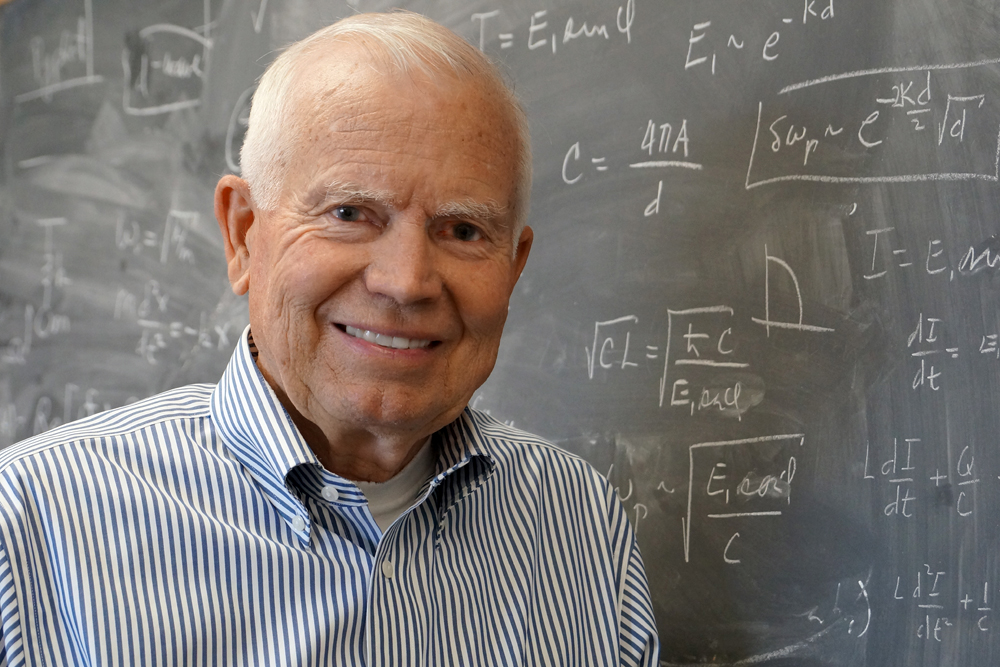
Douglas Scalapino, UC Santa Barbara research professor of physics, will receive the 2013 Eugene Feenberg Memorial Medal. He was cited "for his imaginative use and development of the Monte Carlo approach and for his ground-breaking contributions to superconductivity." The award will be presented in September at the annual Recent Progress in Many-Body Theory Conference in Germany.
"Professor Scalapino has made profound contributions to our understanding of some of the most complex phenomena in condensed matter physics. The Eugene Feenberg Medal is a wonderful recognition of these achievements and add to Dr. Scalapino's fame and, by proxy, our physics department and the UCSB campus," said Pierre Wiltzius, dean of mathematical, life, and physical sciences at UCSB.
"I am surprised and honored to receive the Eugene Feenberg Memorial Medal," said Scalapino, who first came to UCSB in 1968 as a visiting professor. "It also brought back a lot of memories."
After completing his undergraduate degree at Yale and his Ph.D. at Stanford, Scalapino followed his mentor, Edwin T. Jaynes, to Washington University at St. Louis in 1960, where Feenberg had been teaching since 1946.
"There I shared an office with some of Eugene Feenberg's graduate students and attended Feenberg's lectures on the many-body problem," said Scalapino. "It was a special time and what I remember most is how Eugene Feenberg and his graduate students made an outsider from Stanford feel so much a part of their department."
Many-body physics, according to Scalapino, focuses on the collective properties of large numbers of interacting particles, such as electrons in a metal.
"While one knows the basic laws of physics that describe how one electron interacts with another electron, when there are many electrons all interacting with each other, new collective phenomena such as magnetism or superconductivity can emerge," explained Scalapino, whose research is supported by a grant from the Center for Nanophase Materials Sciences at Oak Ridge National Laboratory. "The goal of many-body physics is to understand how this happens."
"This is a very prestigious international award for scientists who have made significant and now well-established progress in many-body theory," said Omer Blaes, chair of the Department of Physics at UCSB. "This is a huge branch of modern physics that is critical for understanding a whole range of phenomena in solid state materials. Doug made huge progress in understanding superconductivity, particularly high temperature superconductivity, which has the potential of revolutionizing electronics."
The medal, awarded under the auspices of the International Advisory Committee of the series of International Conferences on Recent Progress in Many-Body Theories, is "designated for work that is firmly established and which can be demonstrated to have significantly advanced the field of many-body physics." It was established in 1983 to memorialize the man who had made enormous contributions to nuclear physics and microscopic quantum many-body physics. UCSB physics professor Walter Kohn is a previous recipient of the Feenberg Medal. It was presented to him in 1991, seven years before receiving the Nobel Prize in Chemistry.
Patrick Lee, physics professor at MIT, has also been chosen for the 2013 Eugene Feenberg Memorial Medal.
Related Links



